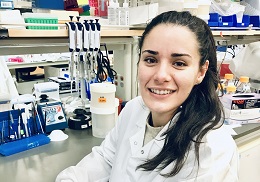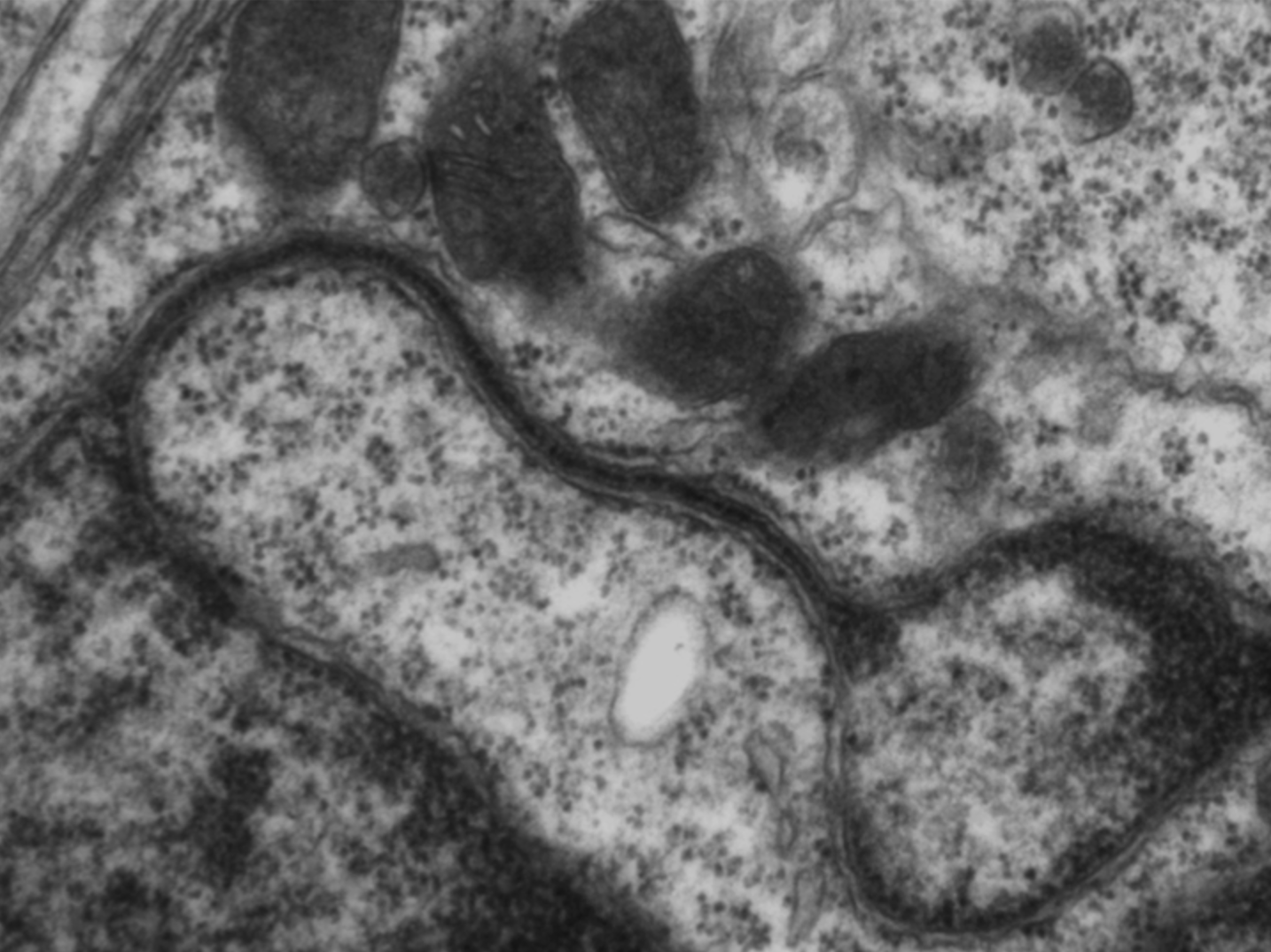
Arantxa Cebrián Silla has received the recognition 2017-2018 Outstanding PhD Award for her work “Estructura nuclear y quiescencia en células madre neurales” (‘Nuclear structure and quiescence in neural stem cells’), directed by Jose Manuel García Verdugo; professor of the University of Valencia in the Department of Cell Biology, Functional Biology and Physical Anthropology and Clara Alfaro Cervelló, adjunct lecturer of the Department of Pathology. Her research has focused on the internal structure of the nervous system stem cells.
The career of Arantxa Cebrián has been linked to the study of neural stem cells in the adult brain since her beginnings as a student in the laboratory of García Verdugo at the University of Valencia. During this period, she has developed her doctoral thesis project, where she has described some previously unknown characteristics of quiescent neural stem cells –cells related to the nervous system that are in a resting phase. Although it is currently unknown what specific function these characteristics have, the relationship between the presence of these in other cell types, even in tumour cells, raises very interesting questions on this subject.
In addition, Arantxa Cebrián has collaborated during her career as a researcher in national and international projects related to the study of stem cells in different regions of the brain. This has allowed her to be a co-author of important research in the study of this type of cells.
Currently, the Valencian Government and the European Social Fund have granted her a post-doctoral fellowship and she is currently doing a stay at the University of California in San Francisco, in the laboratory of Arturo Álvarez Buylla, professor of the Department of Anatomy and Neurosurgery at the University of California and awarded in 2011 with the Prince of Asturias Award for Scientific and Technological Research.
What difficulties have you encountered while undertaking the thesis?
Dedicating yourself to research is a very beautiful and enriching journey. However, during the scientific process there are many difficulties at the experimental level, as well as in obtaining funding. Science presents great challenges and, sometimes, the experiments we have proposed do not generate the expected results. It can be frustrating at times. However, in the same way you can also see unexpected and interesting results, which provide magic to this work.
With regard to funding, there is still a long way to go for our country to be at the same level as other countries. In my case, I have been very fortunate since during my doctoral thesis I have enjoyed an FPU scholarship financed by the Ministry of Economy and Competitiveness.
I have always had a great affinity for Neurosciences. The brain is a fascinating organ and participating in the understanding of its functioning has always been one of my greatest dreams. In addition, having been a collaborating student in the laboratory of José Manuel García Verdugo strengthened my passion for this area. That is why from the beginning I knew that the Neuroscience program offered by the UV was totally made for me.
What continuity does your research have?
Our study has described a new nuclear structure that allows the identification of “dormant” stem cells. In the study we described the components of this nuclear structure, as well as the cell types in which it is present. The next step will be to perform functional experiments that allow us to modify the presence of this structure to know the intrinsic mechanisms. I think it can be a very interesting area of study, and I definitely plan to continue my research in this line.
What do you think your research contributes to the scientific community as a whole and to society? And to you?
Basic science provides a large knowledge base that allows discoveries of transnational research to be applied to the clinic one in the future. Therefore, knowledge of all the aspects that regulate stem cells is of great importance for the development of future tools that allow modifying or modulating them.
From a personal point of view, I have always had a great affinity for neurosciences. The brain is a fascinating organ, and participating in the understanding of its functioning has always been one of my dreams. In addition, having collaborated in a laboratory related to this subject, that of José Manuel García Verdugo, strengthened my passion for this area.
My doctoral thesis work has always thrilled me and I think that someday this knowledge can be applied to the study of stem cells in the developing human brain.
What applicability can your work have?
My doctoral work is fundamentally basic research. This implies an increase in the knowledge of the characteristics of the stem cells that could, in the future, allow us to know how this nuclear structure is present in human stem cells.
Do you think getting a Doctorate facilitates employability?
I really believe that the doctorate can contribute in a very positive way to employability since it is a process in which the doctoral student develops many scientific, as well as organisational and communicative skills. Proof of this is the great interest shown by some American companies, such as biotech startups, by personnel with a PhD.
Would you recommend starting doctoral studies? What advice would you give to a person who wants to get a PhD?
I definitely recommend the completion of a doctoral thesis. I think it is a very enriching experience in which many professional aspects are developed and in which autonomy is gained. If any student is considering doing it, I think it would be very interesting to talk with different laboratories to know what is done there and do a thesis in a subject or area that really thrills them. In addition, it is important to talk to the faculty and find out about the necessary requirements to apply for scholarships. There is some disinformation about how we should prepare ourselves throughout our studies to be able to have a good curriculum and apply for scholarships.
Have you actively participated in outreach activities and scientific communication? How important do you think these activities are?
Yes, I had the opportunity to collaborate in the science dissemination events in Expociencia in the University of Valencia Science Park. It has been a very enriching experience to be able to make science known to children and adolescents. They will be the minds of the future, and opening a door to scientific knowledge can be of great help so that, when they decide what academic path they want to follow, they choose a discipline related to this type of learning. Scientists are largely financed by public entities and helping society know our work is a way to return all that investment.
Regarding dissemination through networks, my scientific work is published in the scientific network Researchgate. In addition, some of the publications in which I have participated can be found on social networks such as Facebook or Twitter. I consider them very useful tools to disseminate science to new generations.
Images:

.jpg)











